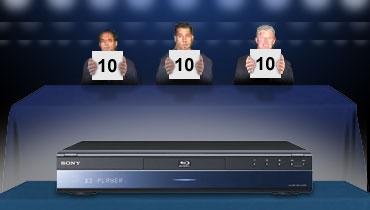Pure and Perfect?

Audiophiles laughed when the CD was first marketed as "Perfect sound forever." They rejected the notion that digital was better than analog, or that the CD sounded better than the LP. Today, it's generally accepted that 44.1-kHz, 16-bit files (with modern improvements such as noise shaping) can challenge the ability of most listeners to detect aural format flaws. One could even argue that for most listening, audio resolution beyond the CD's is overkill. Video resolution isn't far behind, and might soon deliver all the detail our eyes can see.
Perfect and forever are laudable design goals, but not achievable specifications. Instead, we have to ask, "Has the resolution of today's audio and video reproduction reached the limits of human perception?" We can capture audio signals using a sampling frequency of 192 kHz and a 24-bit word length. Such firepower is useful for master recordings, but the frequency response, dynamic range, and low distortion exceed the needs of most listeners. Such resolution, in the form of DVD-Audio, was rejected by consumers, who decided that the CD is adequate for high-fidelity listening. We could argue that at least for audio storage (transducer quality is another issue altogether), we've reached a practical limit.
Video storage technology has taken a giant step with the advent of Blu-ray Disc. Blu-ray at 1080p has a resolution of 1,920 pixels placed horizontally across the image. Some theatrical presentations use 2K (2,048-pixel) or 4K (4,098-pixel) resolution, and many films are transferred to digital storage at 4K. Does 4K achieve a perceptual limit to resolution? The resolution of 35mm film is probably fully captured at 4K. If the movie camera pans, even slightly, the image has even less resolution - probably closer to 2 or 3K - because of blurring caused by shutter limitations.
Anyone who has seen a 4K transfer is familiar with grain, which can be considered the atomic limit of film resolution. In fact, when transferring film to video, mastering engineers have to decide whether to blur the grain (which is a kind of noise) or show it and risk complaints about poor video quality. It's common when making computer-generated effects and animation to add grain because it makes the images more film-like and hence, more acceptable. If we have to intentionally add noise to modern signals, our ability to create and store high-rez video must be pretty good.
And if someone should feel that 4K resolution isn't adequate for capturing and reproducing 35mm film, 6K coding (6,144 pixels, horizontally) is available.Considering that 1 hour of film resolved to 6K needs about 10.5 terabytes of storage, with debatable perceptual improvement, 6K could emerge as the professional standard, with 4K established as the practical consumer limit.
The limits of video and audio storage resolution might be flattening out on a plateau. We probably don't need audio recordings with a sampling frequency greater than 192 kHz, or video recordings with resolution greater than 6K. I'm sure that companies will promote even higher resolution for anyone who can afford it, but the bigger market will turn its attention elsewhere.
There's an old joke: A man is walking down a street at night and sees a kid searching under a streetlight. The kid says he lost his car keys, so the man helps him look, but they can't find the keys. In exasperation, the man asks, "Exactly where did you lose them?" The kid says, "Oh, somewhere up the street." The man says, "Then why aren't you looking there?" And the kid says, "Because the light is better here."
A new technology's progress is often linear. For example, engineers will say that a high-frequency response of x isn't good enough, so they'll introduce an audio format with a response of 2x. And instead of a video resolution of y, they'll develop 2y. That's fine. But audio and video are now mature technologies, and the paradigm has changed. We want engineering that lifts off the plateau and breaks through into new, young technologies. The smart engineers, the ones who will be developing the significant products of the future, aren't looking for ideas under streetlights.























































